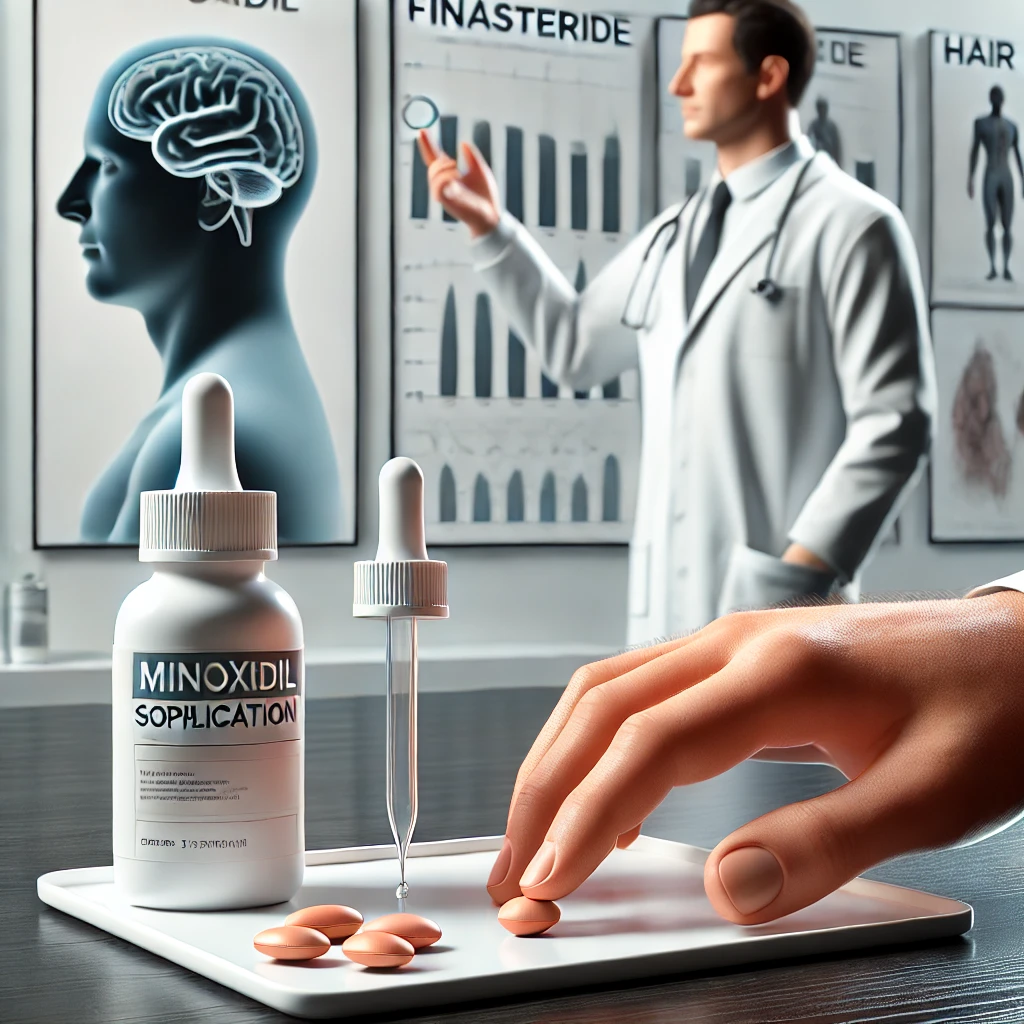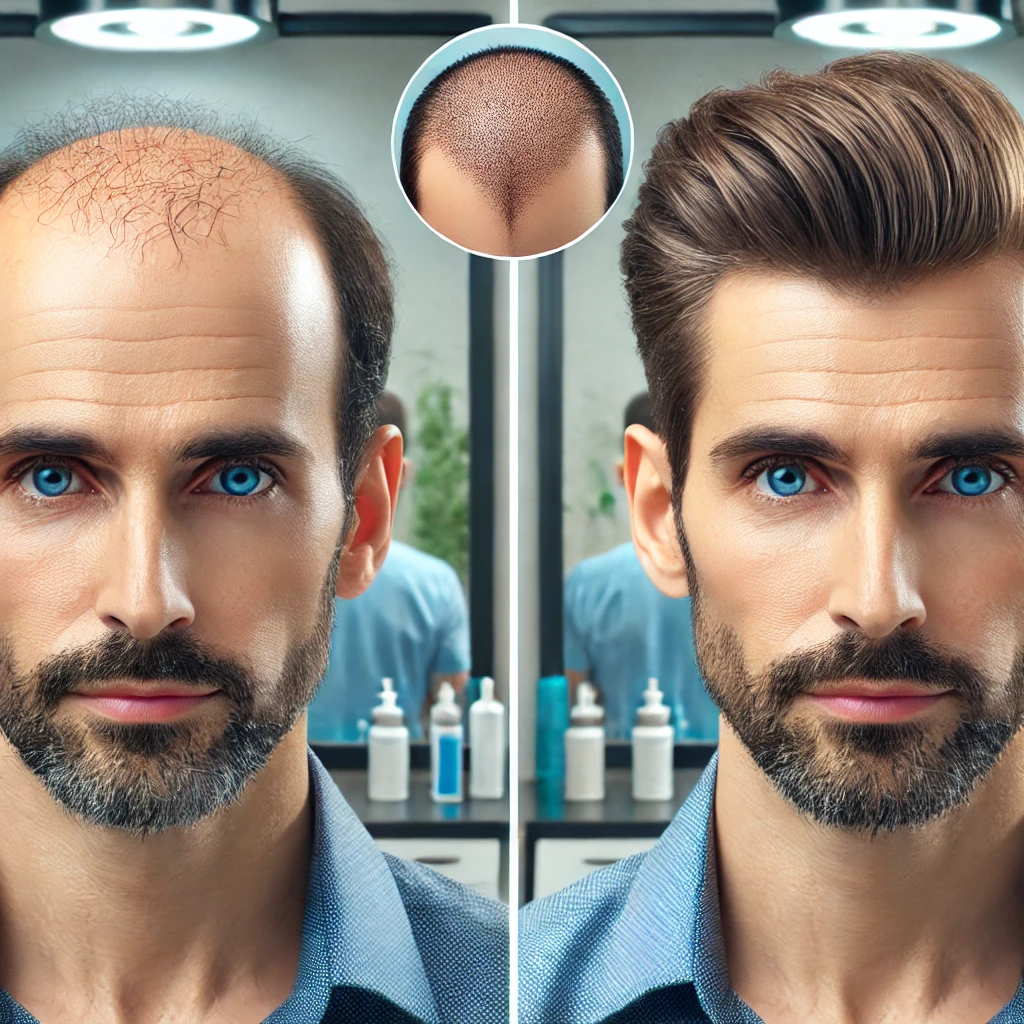Hair loss is a common concern for many people around the world, affecting both men and women. While hair transplants have become a popular solution for those seeking to regain their hair and confidence, not everyone is ready to undergo a surgical procedure. Fortunately, there are several effective alternatives to hair transplants that can help restore hair and improve its appearance. In this article, we’ll explore the best alternatives to hair transplants, ranging from medical treatments to lifestyle changes and natural remedies.

Understanding Hair Loss
Before diving into the alternatives, it’s important to understand the various causes of hair loss. Hair loss can be attributed to several factors, including genetics, hormonal changes, medical conditions, and lifestyle choices. Some common types of hair loss include:
- Androgenetic Alopecia: Also known as male or female pattern baldness, this is the most common form of hair loss, characterized by a gradual thinning of hair on the scalp.
- Alopecia Areata: An autoimmune condition that causes sudden, patchy hair loss.
- Telogen Effluvium: Temporary hair thinning caused by stress, illness, or hormonal changes.
- Traction Alopecia: Hair loss resulting from excessive pulling or tension on the hair.
Understanding the underlying cause of your hair loss is crucial in determining the most effective treatment approach.
Medical Treatments
Medical treatments are often the first line of defense against hair loss, offering clinically proven solutions that can help slow down or reverse the process. Here are some of the most popular medical treatments:
1. Minoxidil (Rogaine)
Minoxidil is a topical treatment that is available over the counter and is FDA-approved for both men and women. It works by increasing blood flow to the hair follicles, promoting hair growth, and slowing down hair loss.
- Application: Minoxidil is typically applied directly to the scalp once or twice daily, depending on the concentration (2% or 5%).
- Effectiveness: Studies have shown that Minoxidil can be effective in promoting hair growth and reducing hair loss, particularly in cases of androgenetic alopecia.
- Side Effects: Some users may experience scalp irritation, itching, or unwanted facial hair growth.
2. Finasteride (Propecia)
Finasteride is an oral medication that is FDA-approved for use in men. It works by inhibiting the production of dihydrotestosterone (DHT), a hormone that contributes to hair loss in androgenetic alopecia.
- Dosage: Finasteride is typically taken as a daily pill.
- Effectiveness: Clinical studies have demonstrated that Finasteride can significantly slow down hair loss and promote hair regrowth in men.
- Side Effects: Potential side effects include decreased libido, erectile dysfunction, and breast tenderness.
3. Dutasteride (Avodart)
Similar to Finasteride, Dutasteride is an oral medication that inhibits DHT production. Although not FDA-approved for hair loss, it is often used off-label for this purpose.
- Comparison to Finasteride: Some studies suggest that Dutasteride may be more effective than Finasteride in treating hair loss due to its stronger DHT-blocking effects.
- Side Effects: Side effects are similar to those of Finasteride and may include sexual dysfunction.
4. Platelet-Rich Plasma (PRP) Therapy
PRP therapy involves injecting a concentration of platelets from your own blood into the scalp. The growth factors in platelets are believed to stimulate hair follicles and promote hair growth.
- Procedure: A small amount of blood is drawn, processed to concentrate the platelets, and then injected into the scalp.
- Effectiveness: Some studies have shown promising results, with improvements in hair thickness and density.
- Side Effects: PRP therapy is generally considered safe, with minimal side effects such as mild pain at the injection site.
Non-Medical Alternatives
For those who prefer non-medical approaches, several alternatives can improve hair health and appearance without the use of drugs or invasive procedures.
1. Low-Level Laser Therapy (LLLT)
Low-level laser therapy involves the use of laser devices to stimulate hair follicles and promote hair growth.
- Devices: LLLT devices come in various forms, including combs, helmets, and caps, making them easy to use at home.
- Effectiveness: Studies have shown that LLLT can improve hair density and thickness in individuals with androgenetic alopecia.
- Safety: LLLT is generally considered safe, with no significant side effects reported.
2. Microneedling
Microneedling involves using a device with fine needles to create micro-injuries in the scalp, which can stimulate collagen production and hair growth.
- Procedure: Microneedling is typically performed by a dermatologist, but at-home devices are also available.
- Effectiveness: Research suggests that microneedling can enhance hair growth, particularly when combined with topical treatments like Minoxidil.
- Side Effects: Temporary redness and irritation may occur after treatment.
3. Scalp Massage
Regular scalp massages can improve blood circulation to the hair follicles, potentially promoting hair growth.
- Technique: Use your fingertips to apply gentle pressure in circular motions on your scalp for several minutes daily.
- Effectiveness: While evidence is limited, some studies suggest that scalp massage may improve hair thickness and growth.
- Cost: Scalp massage is a cost-effective and low-risk option for those seeking to improve hair health.
4. Wigs and Hairpieces
For those seeking immediate results, wigs and hairpieces offer a non-surgical solution to hair loss.
- Options: Wigs come in various styles, colors, and materials, allowing for a personalized look.
- Realism: Advances in technology have led to more realistic-looking wigs and hairpieces that can be virtually indistinguishable from natural hair.
- Maintenance: Regular cleaning and care are necessary to maintain the appearance and longevity of wigs and hairpieces.
Natural Remedies
Many people prefer natural remedies as a more holistic approach to hair loss. While scientific evidence for these remedies may be limited, some individuals report positive results.
1. Essential Oils
Certain essential oils are believed to promote hair growth and improve scalp health.
- Popular Oils: Rosemary oil, peppermint oil, and lavender oil are commonly used for hair growth.
- Application: Mix a few drops of essential oil with a carrier oil (e.g., coconut or jojoba oil) and massage into the scalp.
- Effectiveness: Some studies suggest that essential oils may have a positive impact on hair growth, though more research is needed.
2. Herbal Supplements
Herbal supplements are often used to support hair health and prevent hair loss.
- Common Supplements: Saw palmetto, biotin, and ginseng are popular choices for promoting hair growth.
- Effectiveness: While some supplements may help improve hair health, results can vary, and scientific evidence is limited.
- Consultation: Always consult with a healthcare professional before starting any new supplements to ensure they are safe and appropriate for your needs.
3. Dietary Changes
A balanced diet rich in essential nutrients can support hair health and potentially reduce hair loss.
- Nutrients: Protein, iron, zinc, and vitamins A, C, and E are crucial for healthy hair.
- Foods to Include: Incorporate lean meats, leafy greens, nuts, seeds, and fruits into your diet to provide the necessary nutrients for hair growth.
- Hydration: Staying hydrated is also important for maintaining healthy hair and scalp.
4. Ayurvedic Treatments
Ayurveda, a traditional Indian system of medicine, offers natural remedies for hair loss.
- Popular Remedies: Bhringraj, amla (Indian gooseberry), and neem are commonly used in Ayurvedic treatments for hair health.
- Application: These remedies can be applied as hair masks, oils, or in the form of supplements.
- Effectiveness: While Ayurvedic treatments have been used for centuries, scientific evidence is limited, and individual results may vary.
Lifestyle Changes
In addition to the above treatments and remedies, certain lifestyle changes can help improve hair health and prevent further hair loss.
1. Stress Management
Stress is a significant contributor to hair loss, and managing stress can positively impact hair health.
- Techniques: Practice relaxation techniques such as yoga, meditation, and deep breathing exercises to reduce stress levels.
- Work-Life Balance: Prioritize self-care and maintain a healthy work-life balance to minimize stress.
2. Hair Care Practices
Proper hair care can help prevent damage and promote healthy hair growth.
- Gentle Handling: Avoid excessive brushing, heat styling, and harsh chemical treatments that can damage hair.
- Regular Trims: Get regular haircuts to prevent split ends and breakage.
- Appropriate Products: Use shampoos and conditioners that are suitable for your hair type and free from sulfates and parabens.
3. Sleep and Exercise
Adequate sleep and regular exercise can support overall health and hair growth.
- Sleep: Aim for 7-9 hours of quality sleep each night to allow your body to repair and regenerate.
- Exercise: Engage in regular physical activity to improve circulation and reduce stress, both of which can benefit hair health.
4. Avoiding Harmful Habits
Certain habits can contribute to hair loss and should be minimized or avoided.
- Smoking: Smoking can reduce blood flow to the scalp and damage hair follicles, leading to hair loss.
- Alcohol Consumption: Excessive alcohol consumption can deplete essential nutrients and negatively impact hair health.
- Tight Hairstyles: Avoid tight hairstyles that put stress on the hair and scalp, leading to traction alopecia.

Choosing the Right Alternative
With so many alternatives to hair transplants available, it can be challenging to determine which option is best for you. Here are some factors to consider when making your decision:
1. Cause of Hair Loss
Understanding the underlying cause of your hair loss is crucial in choosing the most effective treatment. Consult with a healthcare professional or dermatologist to identify the cause and explore appropriate solutions.
2. Severity of Hair Loss
The severity of your hair loss can influence the effectiveness of different treatments. For mild to moderate hair loss, non-medical treatments and lifestyle changes may be sufficient, while more severe cases may require medical interventions.
3. Budget and Time Commitment
Consider your budget and the time you can commit to treatment. Some options, such as wigs or hairpieces, offer immediate results, while others, like medical treatments and natural remedies, may require more time and financial investment.
4. Personal Preferences
Your personal preferences and comfort level with different treatments should also play a role in your decision. Whether you prefer natural remedies, medical treatments, or a combination of both, choose an option that aligns with your values and lifestyle.
5. Consultation with Professionals
Before starting any treatment, it’s essential to consult with a healthcare professional or dermatologist. They can provide personalized recommendations based on your individual needs and ensure that the chosen treatment is safe and effective.
Conclusion
Hair loss can be a challenging experience, but with the right approach, it’s possible to improve hair health and appearance without resorting to hair transplants. From medical treatments and non-medical alternatives to natural remedies and lifestyle changes, there are numerous options available to suit different needs and preferences.
By understanding the underlying cause of your hair loss and exploring the various alternatives, you can make an informed decision and take steps toward achieving healthier, fuller hair. Remember to consult with professionals, stay consistent with your chosen treatment, and be patient, as results may take time to become apparent.

